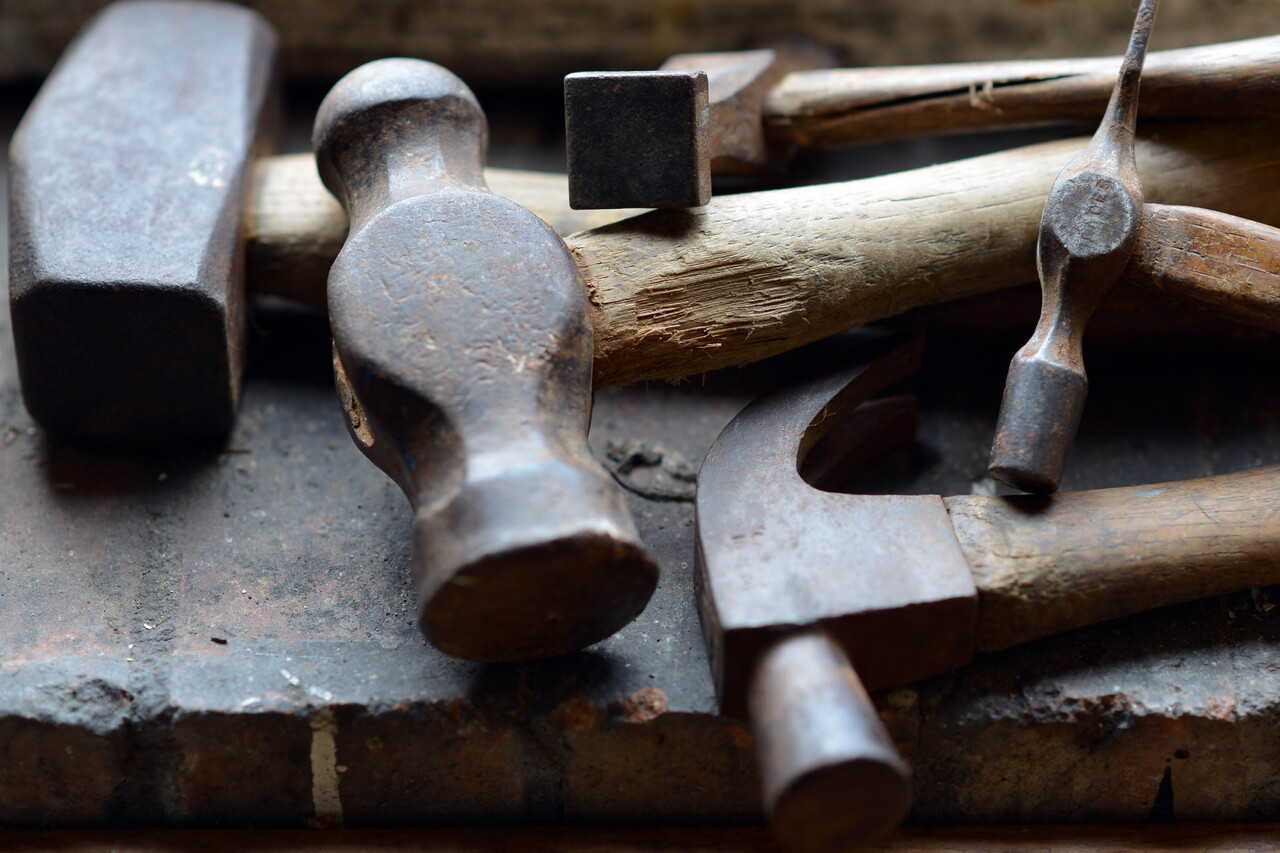
Hammers are a ubiquitous tool that has been used by humans for thousands of years for a variety of purposes. From construction and manufacturing to warfare and art, the hammer has played an important role in shaping human history and civilization. In this article, we will explore some interesting facts about hammers, highlighting their versatility and significance in various fields.
The first recorded use of hammers dates back to ancient Egypt around 4,000 years ago. They were primarily used for shaping stones and metals. The first hammers were made from wood or bone, with a stone or metal head attached. Over time, hammers evolved and became one of the most important tools in human history.
The modern hammer, with a claw for removing nails, was invented in the 19th century. It was patented by the American inventor, David Maydole. The claw hammer revolutionized the construction industry by making it easier to remove nails and reuse lumber. Today, the claw hammer is one of the most commonly used tools in households and construction sites around the world.
The term “hammer” comes from the Old English word “hamor,” which means “tool with a stone head.” The word can also be traced back to the Proto-Germanic word “hamaraz,” which has the same meaning. The term “hammer” is used to describe a wide range of tools with a striking head, including sledgehammers, mallets, and ball-peen hammers.
The most common type of hammer is the claw hammer, which is used for driving nails and removing them. It has a flat striking surface on one side and a claw on the other side for removing nails. Claw hammers come in a variety of sizes and weights, with the most common being 16 ounces. They are often made of steel, with a handle made of wood, fiberglass, or plastic.
Hammers can be made of a variety of materials, including wood, metal, plastic, and rubber. The type of material used depends on the intended use of the hammer. For example, hammers used in construction are often made of steel, while those used in woodworking may be made of wood. Rubber mallets are often used when a softer striking force is required.
The largest hammer in the world is the “Big Blue” hammer, which is used in shipbuilding and weighs over 16,000 pounds. It was built by the German company ThyssenKrupp and is used to shape and mold large metal plates. The hammer is powered by hydraulic pressure and can strike with a force of up to 800 tons.
Hammers are also used in mining and construction to break up rocks and concrete. These hammers are often called “jackhammers” or “demolition hammers” and are designed to deliver a high-impact force. They come in a variety of sizes and can be powered by electricity, compressed air, or hydraulic pressure.
The first patent for a hammer with a screw mechanism for adjusting the tension on the head was filed in 1834. The patent was granted to American inventor Hiram A. Farrand. The screw mechanism allowed users to adjust the tension on the head of the hammer, making it easier to drive nails or strike objects with greater force.
Hammers are often used in sports such as carpentry, blacksmithing, and metalworking. These sports require a high degree of accuracy and skill in striking an object. For example, blacksmiths use hammers to shape and mold hot metal into various shapes and objects.
The hammer throw is an athletic event in which athletes throw a heavy metal ball attached to a wire. The athlete spins around several times before releasing the ball, with the goal of throwing it as far as possible. The hammer throw is one of the oldest events in the modern Olympic Games, with the first competition taking place in 1900.
The shape of the hammerhead can vary depending on the intended use. For example, a sledgehammer has a large, flat head for heavy-duty work, while a ball-peen hammer has a rounded head that is used for shaping metal. A framing hammer has a longer handle and a heavier head, making it ideal for driving large nails into wooden beams.
In ancient times, hammers were also used as weapons in battle. The war hammer was a type of hammer designed for combat and was often used by knights and other warriors. The head of the war hammer was made of metal and had a sharp point for piercing armor.
Hammers are also used in musical instruments, such as the piano and xylophone. The hammer mechanism in a piano strikes the strings to produce sound, while in a xylophone, the hammers strike the bars to create different tones.
The first air hammer was invented in 1890 by Charles Brady King. It was powered by compressed air and was used in mining and construction to break up rocks and concrete. Today, air hammers are commonly used in automotive repair and maintenance.
The smallest hammer in the world is the “micro-hammer,” which is only a few millimeters in size. It is used in research and development for precise and delicate work, such as testing the strength of materials at the atomic level.
The use of hammers is not limited to human beings. Some animals, such as woodpeckers, use their beaks as hammers to break open nuts and extract insects from trees.
In the early 20th century, ball-peen hammers were commonly used in the automotive industry to shape and mold sheet metal into car bodies. Today, the process is done mostly by machine, but some custom car builders still use ball-peen hammers for certain parts of the process.
The hammer has also played an important role in shaping human history. For example, the construction of the Transcontinental Railroad in the United States was made possible by the use of hammers to drive spikes into the wooden ties.
In 2015, a team of engineers from the University of California, Berkeley, developed a hammer that can detect the hardness of the surface it strikes. The hammer is equipped with a sensor that measures the vibrations produced when the hammer strikes an object. This technology has potential applications in construction and archaeology.
The world’s largest hammer collection belongs to Dave Pahl, a retired schoolteacher from Wisconsin, USA. His collection includes over 8,000 hammers from around the world and spans thousands of years of history.
Hammers have also been used in art and sculpture. For example, the artist Claes Oldenburg is known for his sculptures of everyday objects, including a giant hammer in Seattle, Washington.
The hammer and sickle, a symbol of the Soviet Union, represents the unity of the workers and peasants. The hammer represents the workers, while the sickle represents the peasants. The symbol was widely used during the Soviet era and is still used by some communist parties today.
In 2005, a team of researchers from the University of Toronto developed a hammer that can detect the density of the object it strikes. The hammer is equipped with a sensor that measures the time it takes for the hammer to rebound after striking an object. This technology has potential applications in medicine, where it could be used to detect bone density.









